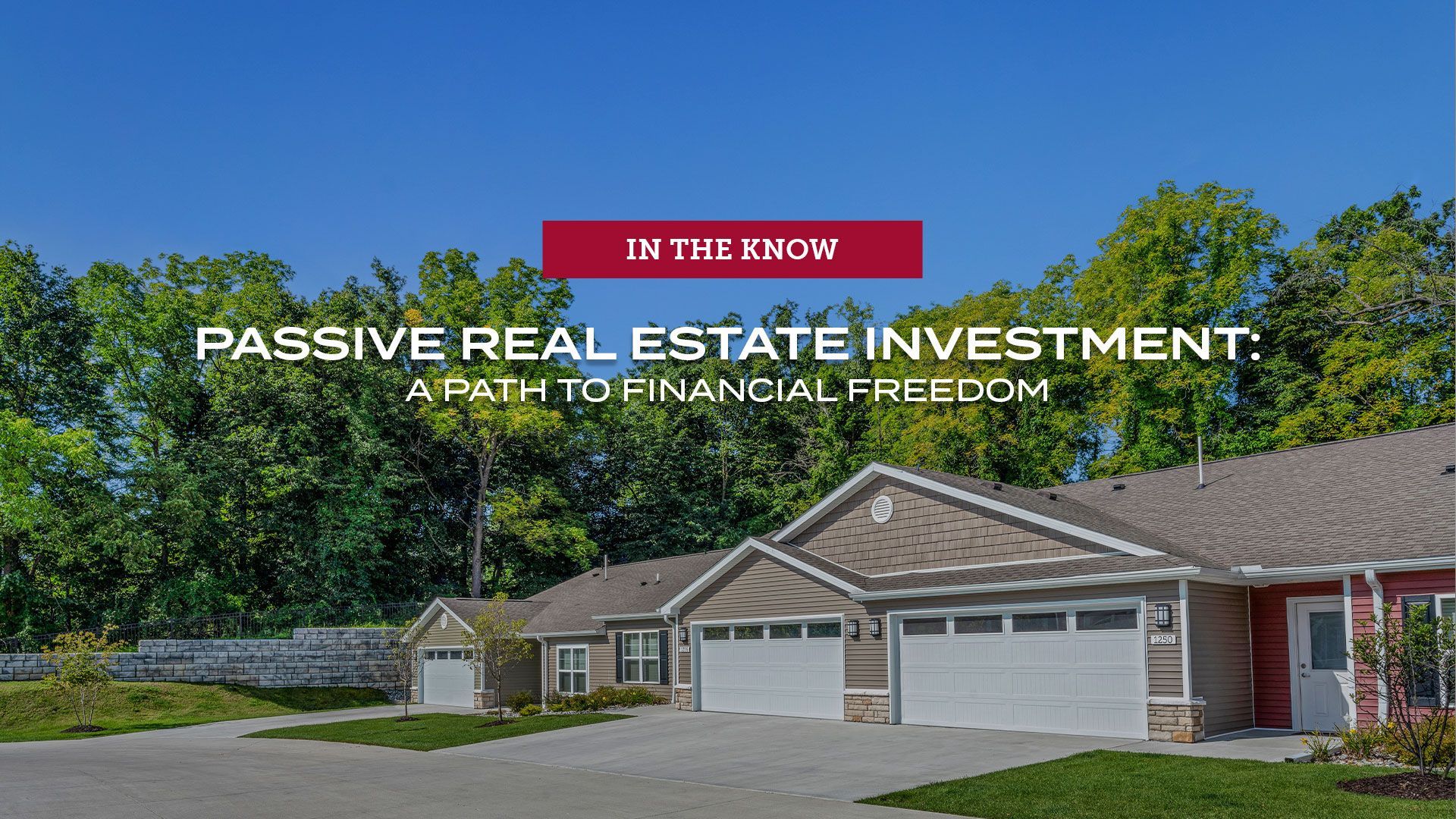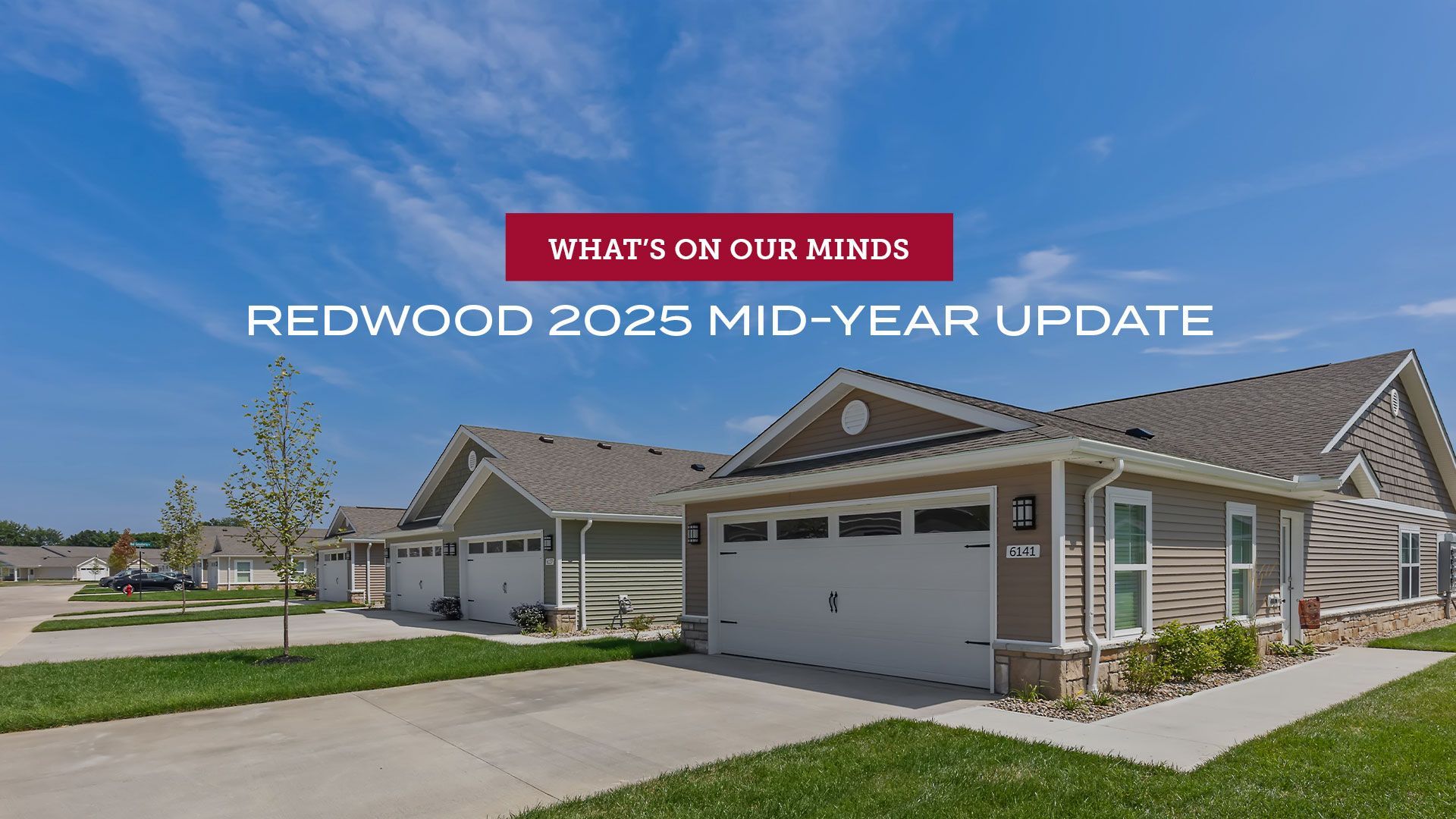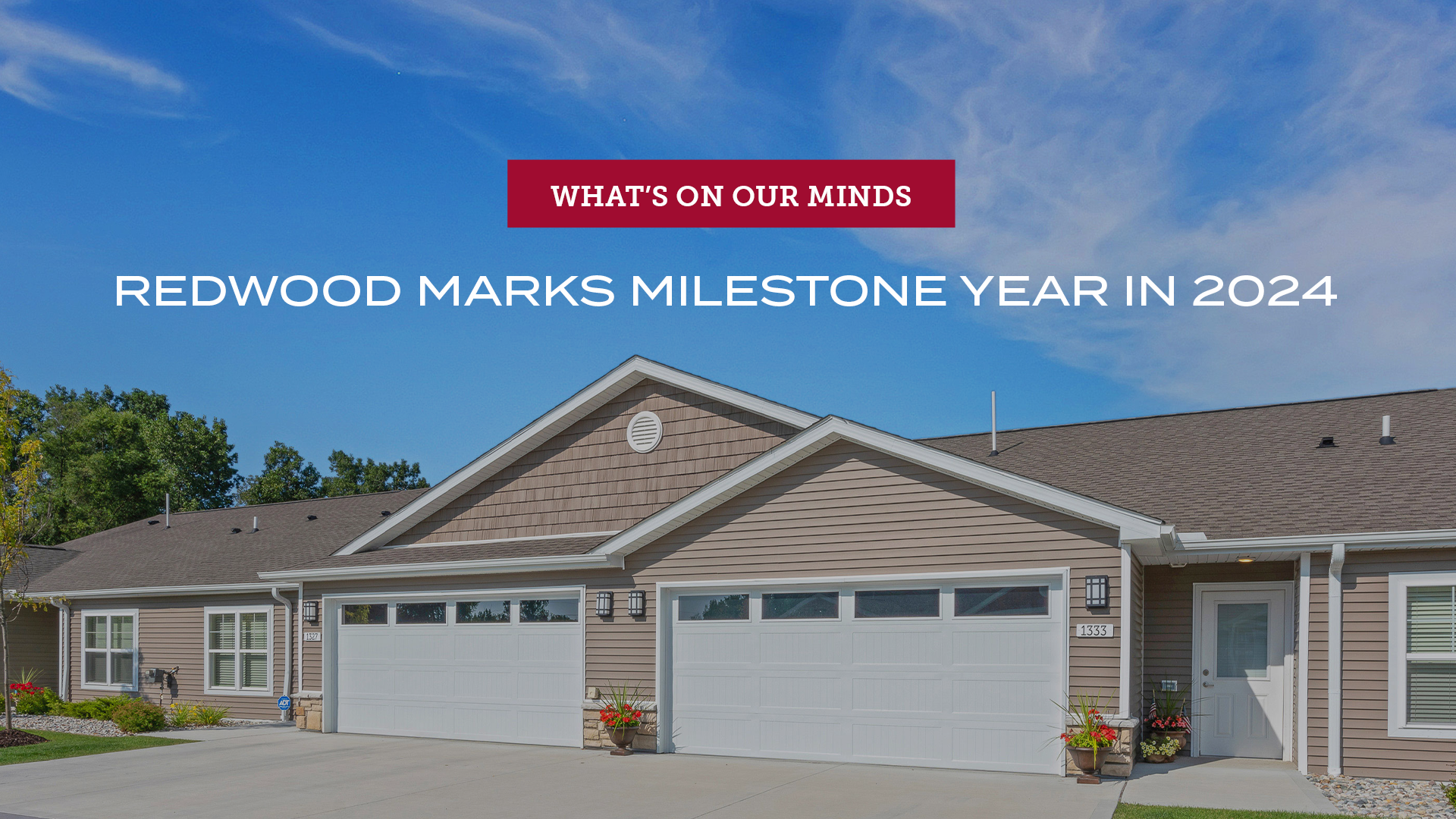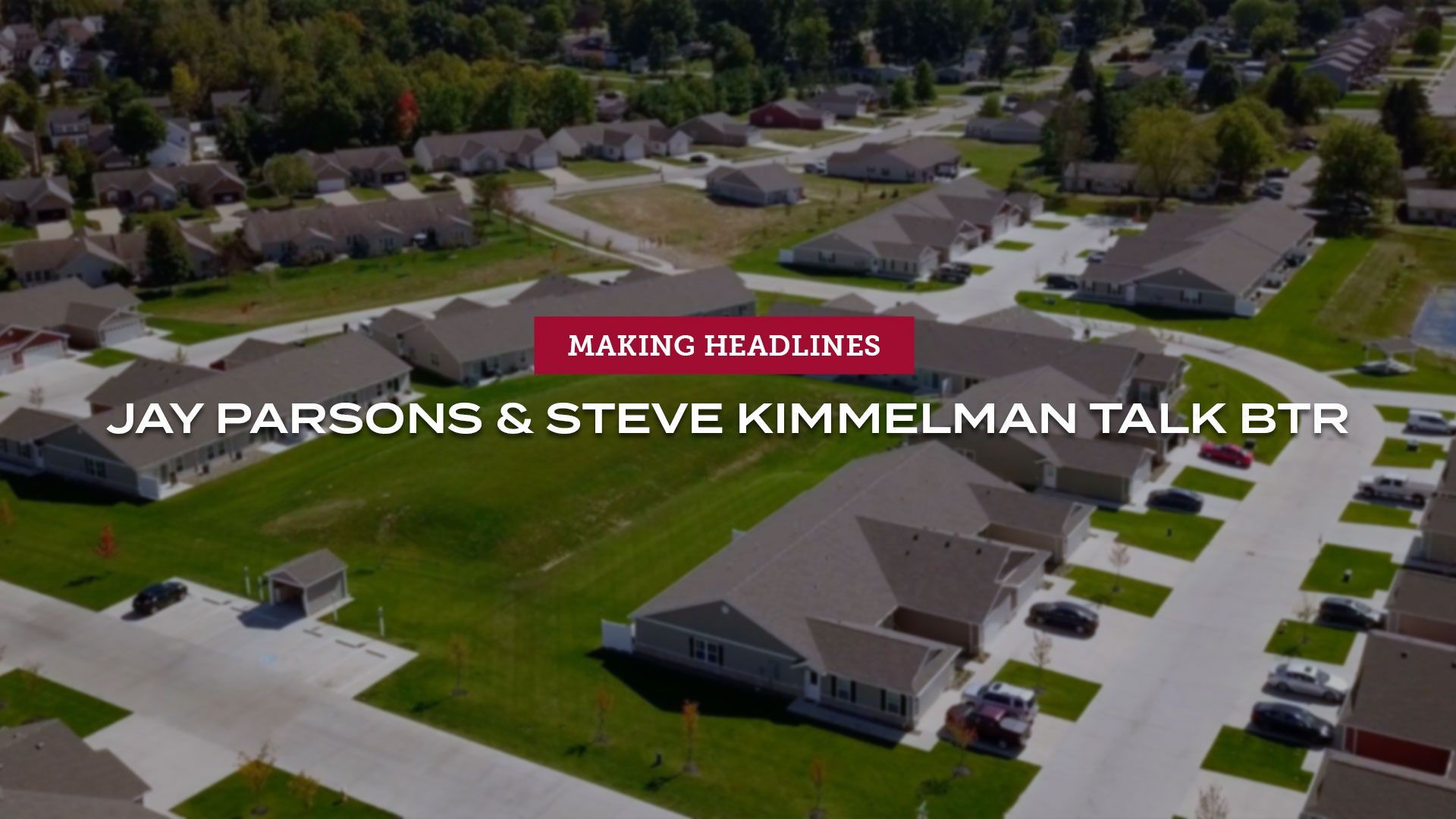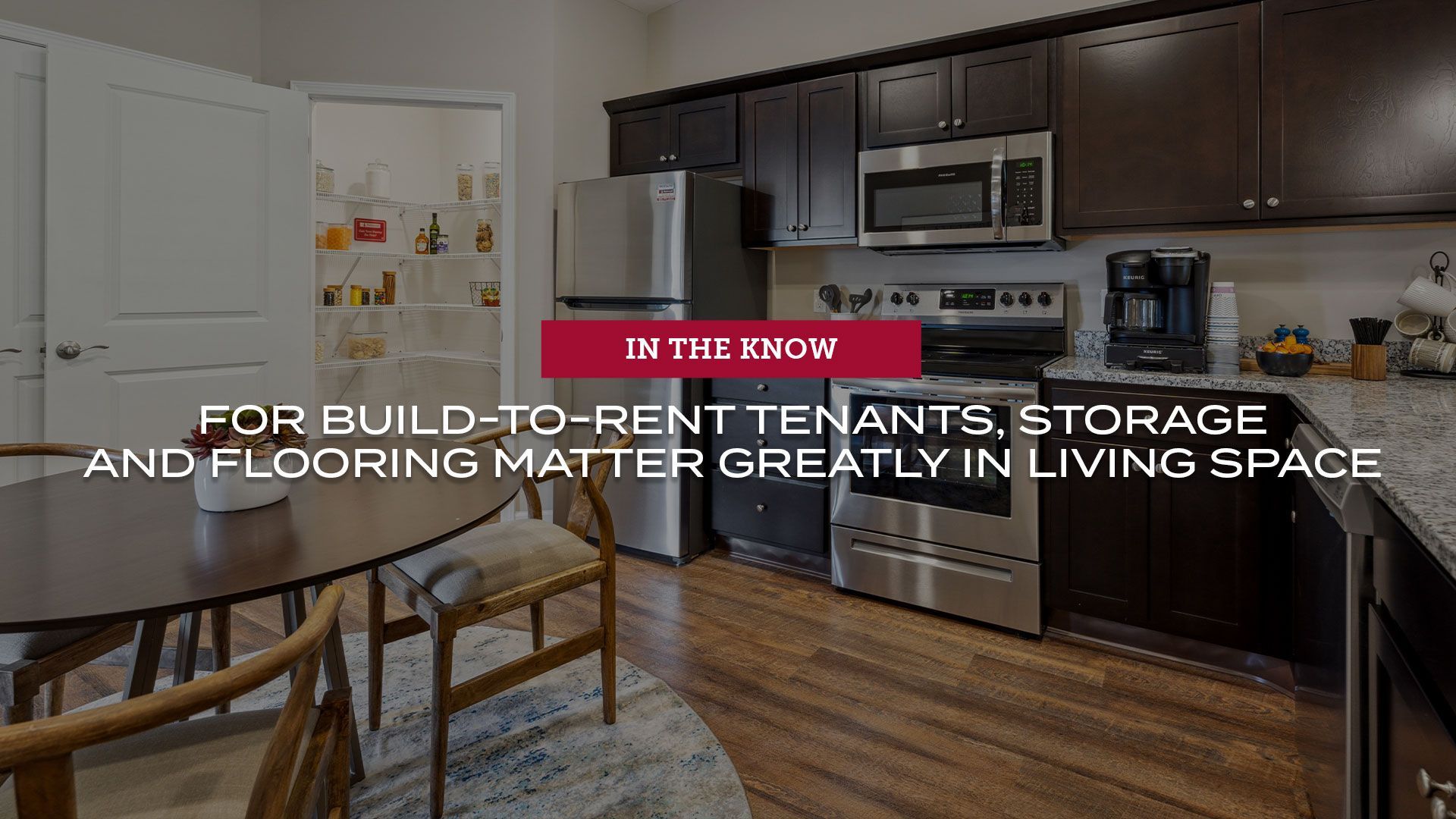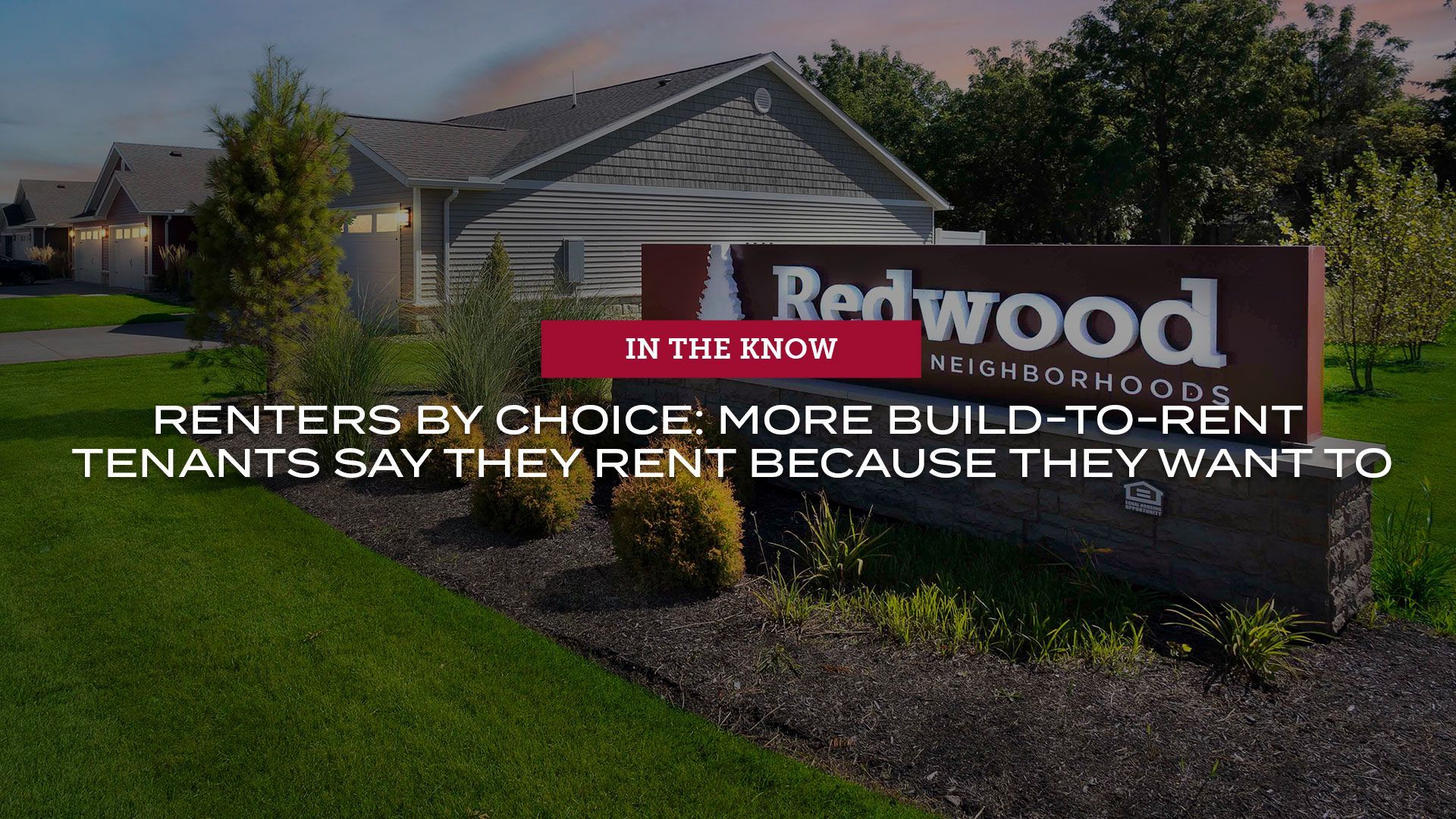6 key advantages Redwood build-to-rent neighborhoods offer investors
What began as a belief — that apartment residents desired a different lifestyle — has evolved into a proven business model at Redwood Living, Inc. By creating and cultivating apartments that feel like home, with privacy, attached garages and single-story living, Redwood Neighborhoods have filled and multiplied across the Midwest and beyond.
The numbers begin to tell part of the story:
- 20,500+ Redwood apartment homes across nine states
- 2,300+ apartments under construction
- Feedback from 30,000 current residents, 640 Redwood Ambassadors, and hundreds of trade partners—all shaping how Redwood designs, builds, and operates
- A pipeline of over 8,000 future apartment homes
- Assets under management valued at more than $5 billion
- And a clear goal: 30×30—30,000 Redwood apartment homes by December 2030
“None of this would be possible without our investors,” Steve Kimmelman, Founder and Chief Executive Officer said. “They’ve built the Redwood platform with us, and as strong as our past has been, we believe the best is still ahead.”
Recently, Redwood leaders shared additional insight into the company’s achievements and growth strategy. Here are six key takeaways for current and prospective investors.
Strong, steady performance
Redwood is enjoying a solid growth trajectory, with success in several key metrics:
- Occupancy at 96%, up 1.4% year over year
- Rent growth averaging 3%
- Renewal rent growth at an outstanding 5%
- Resident retention at a strong 59%
“There’s also a strong pipeline ahead,” Kimmelman said. “We’ve secured zoned land in markets we consider Tier 2 growth markets, which allows us to develop and lease up consistently while others in the industry focus on oversaturated markets.”
Long hold strategy and downside protection
Redwood’s approach emphasizes pacing, resilient underwriting and re-underwriting through lease-up. The company takes a conservative approach to debt, avoiding reliance on rate relief.
“We continue to maintain consistent underwriting standards across all projects, with a heavy focus on market rental rates, real estate taxes, and interest rates,” Kimmelman said.
“We are not structuring deals based on speculation around interest rate changes; we're underwriting to current conditions. We’ve also proven resilience across economic cycles because of where—and how—we build: neighborhoods in untapped markets where demand for our product is real and lasting.”
Product differentiation that residents value
Redwood’s single-story living in apartment homes with attached garages reduce shared walls and noise, improve maintenance access and support higher resident satisfaction and retention.
“The BTR universe is diverse, but not all product types perform the same,” Kimmelman said. “At Redwood, our differentiator matters. Our neighborhoods attract renters who want the privacy and simplicity of a home without the burdens of ownership. This is not just about unit count—it’s about fit and execution. We’re not trying to win on density; we’re winning on product-market fit.”
The approach has proven successful, attracting a variety of demographics including empty nesters, downsizers, professionals, and renters-by-choice, with more than 70 percent resident retention in stabilized neighborhoods.
Construction cost discipline and underwriting clarity
In a world of uncertainty, Redwood takes steps to ensure schedule reliability, value-engineering and targeted spec adjustments throughout construction and design.
“Our underwriting is conservative, and our assumptions evolve with policy, labor, and materials volatility,” Kimmelman said.
“We’ve implemented budgeting tools based on neighborhood age that help us anticipate maintenance costs, capital needs, and staffing over time.”
Redwood distinguishes between core features and optional upgrades in its homes, allowing pricing to align with resident expectations and willingness to pay, rather than overbuilding amenities that don’t deliver ROI.
“Our design standards also limit vertical construction complexity, reducing material costs and mitigating some policy-driven regulatory risk compared to denser structures,” Kimmelman said.
Design and technology that matter
Redwood has implemented practical tools and resident-informed designs that continue to remove friction for residents and on-site teams.
“We’ve established design standards that scale without quality loss, allowing for consistency across neighborhoods,” Kimmelman said. “We’re also leaning into technology, including AI, as we continue to hone our approach.”
That includes everything from integrating AI into some of the leasing process to “The Redwood Choice®” which allows residents to choose their communication and apartment touring style.
New smart-home features currently being piloted in some Redwood Neighborhoods include keyless entry, Ring doorbells, connected thermostats and leak sensors.
“Our residents help inform our design choices and amenities,” Kimmelman added. “Their feedback has led to more flexible spaces, optimized storage, a trend toward lighter design palettes, elevated curb appeal and enhanced livability with wider kitchen work zones, pet-friendly flooring and EV-ready garages.”
Capital, liquidity and what’s next
Redwood remains focused on balanced deployment, durable distributions, and selective growth aligned to the 30×30 plan.
“We’ve structured our platform for resilience, but macro policy will always influence timing and scale of returns,” Kimmelman said. “However, our long-term hold philosophy allows us to weather rate cycles without being forced to exit or refinance prematurely.”
Redwood’s vertically integrated model also limits fee leakage, helping preserve margin even in tighter environments.
“We don’t rely on rent spikes or short-term IRR-driven flips, so we can maintain distributions more consistently — even if modestly adjusted,” Kimmelman said.
For product evolution, Redwood is excited to add new layout options for residents, including three-bedroom floor plans and two-story townhomes.
“Reaching Redwood’s long-term goals will take real discipline, but we will achieve it while never compromising on the quality and consistency our residents expect and our investors deserve,” Kimmelman added.
As the broader rental housing industry grapples with oversupply in certain markets, increasing regulatory pressure and shifting renter preferences, Redwood stands apart by anticipating where demand is moving. By delivering the type of homes today’s renters increasingly seek—private, maintenance-free with flexible accommodations in growth markets—Redwood has positioned itself at the intersection of lifestyle demand and investment durability. For investors, that translates into a platform built for resilience, consistent returns and long-term growth that outpaces many traditional multifamily strategies. To find out more about current deals, upcoming opportunities and Redwood’s unique approach to real estate investment, connect with a member of our Investor Relations team here.


